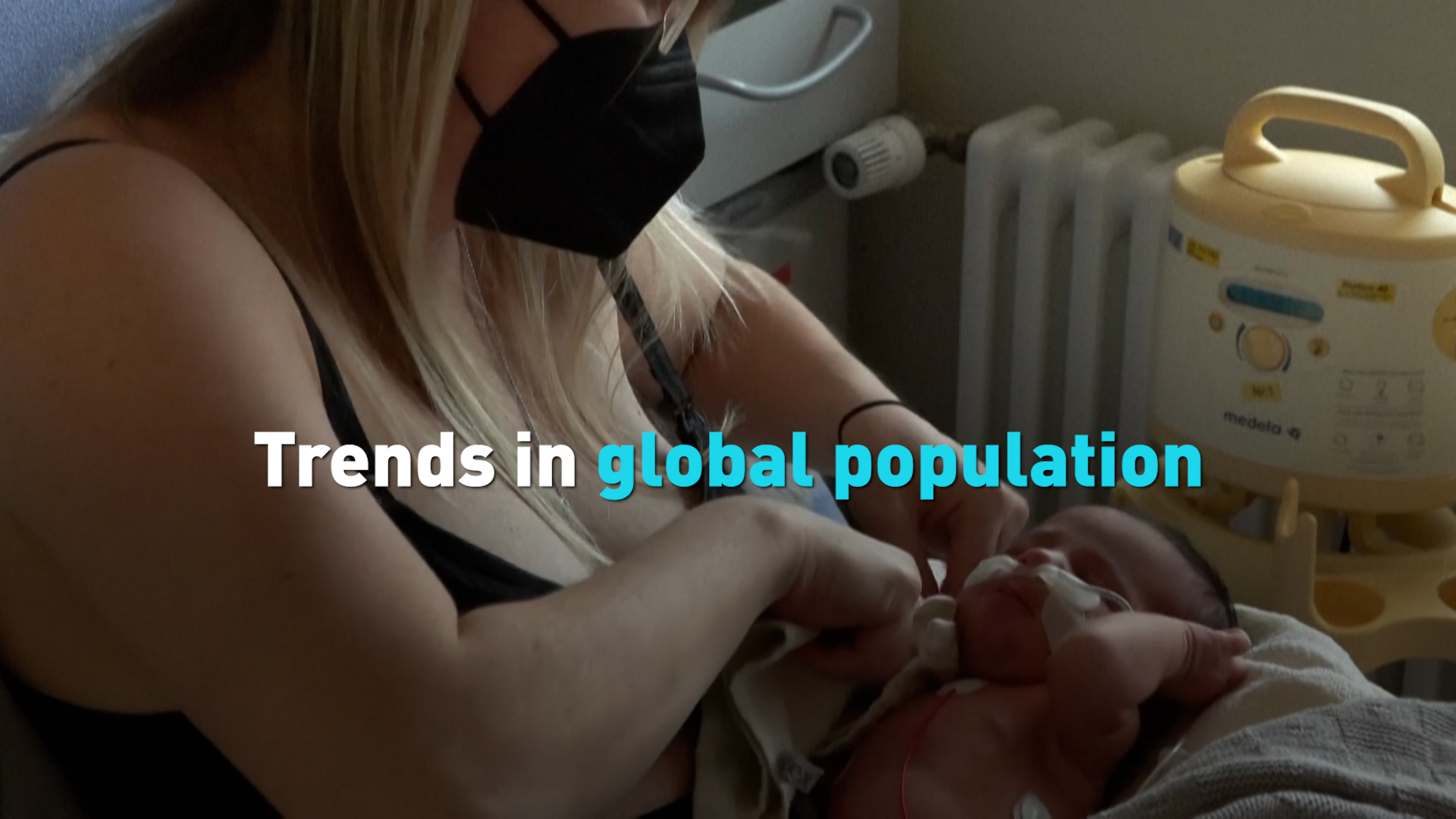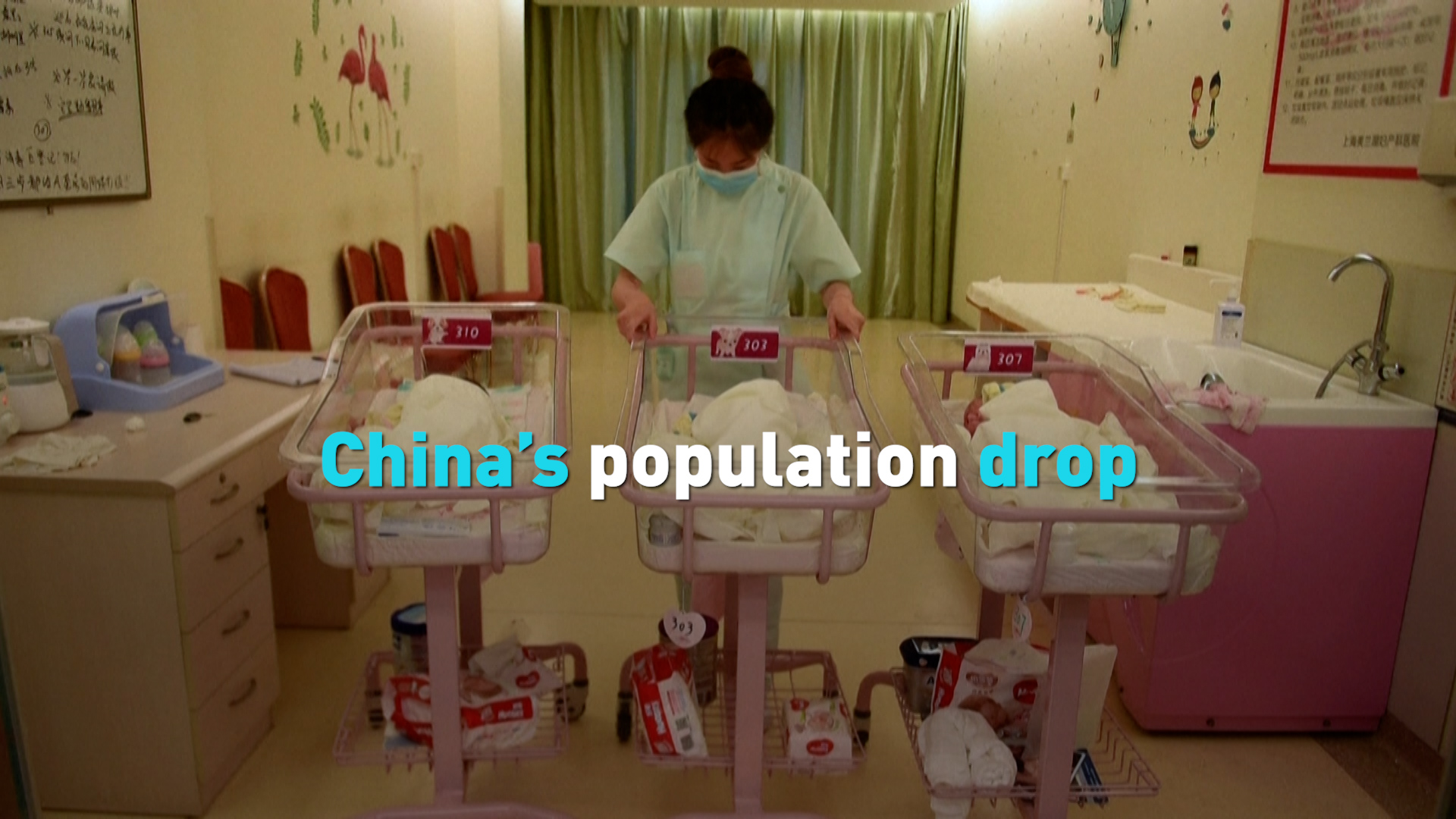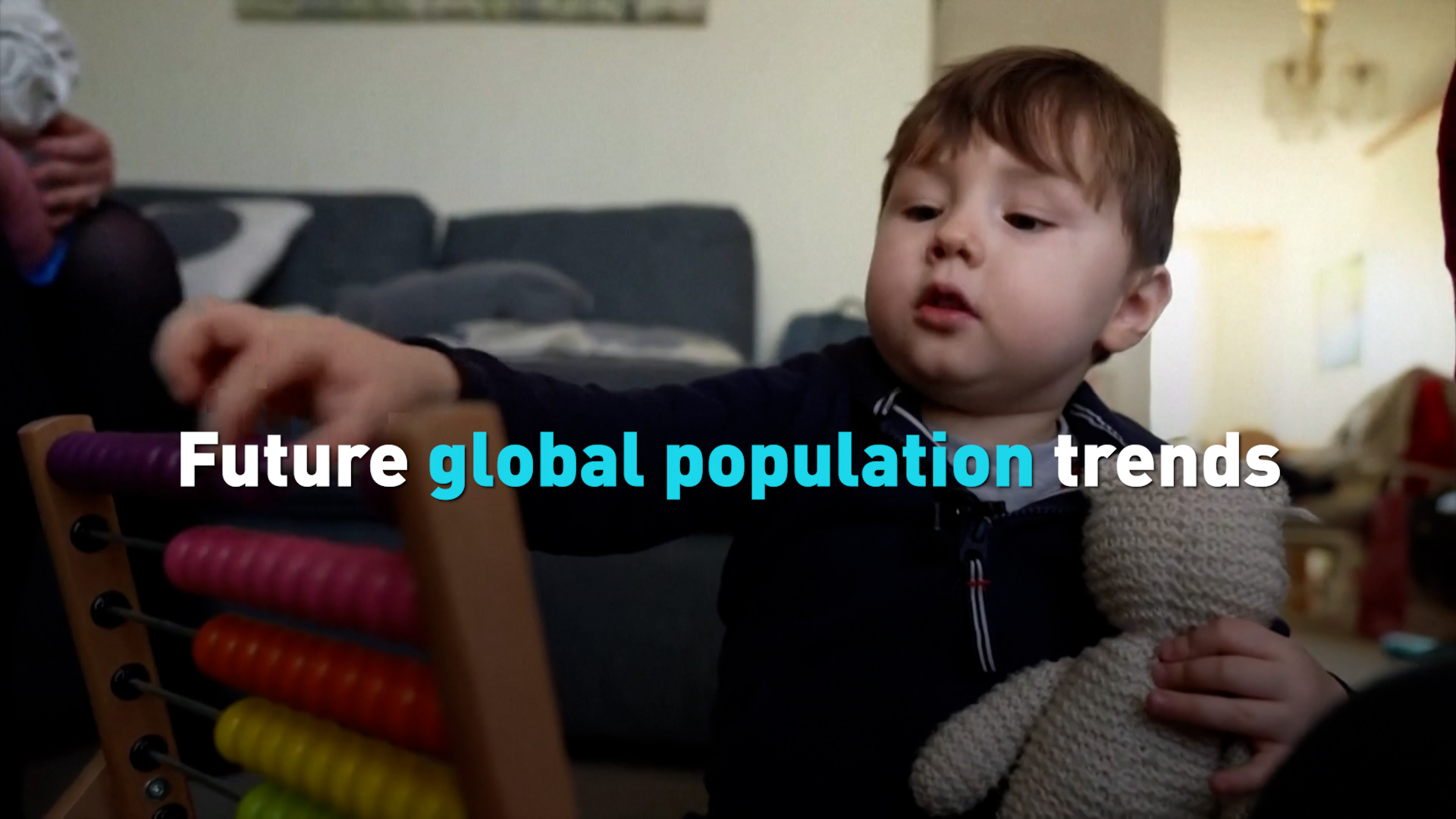A population at 8 billion
The world’s population reached 8 billion people on November 15, 2022, growing by 1 billion since 2010 and reflecting a rapid population spike over the past few decades.
However, global fertility rates have been dropping over the last 70 years. The World Bank reported that by 2020, fertility rates fell 2.3 births per woman, compared to 1963 height of 5.3 births per woman.
The UN predicts that the average global fertility rate will continue to decline and will reach to 2.1 by 2050. However, that decline is not completely even, as analysts see rapid population growth in sub-Saharan Africa.
Other trends are driving population increases and declines around the world and are expected to have a major impact socially and politically.
01:32

China’s recent population drop
In mid-January, China reported its first major population drop in six decades, reporting roughly a drop of 850,000 people for a population of 1.411 billion in 2022.
Analysts are concerned about the economic impact that a slowing population growth or decline will have on China.
Ronald Lee, Professor Emeritus of Demography and Economics, University of California- Berkeley, explains that this decline would have an impact on the country’s GDP growth.
“China is a driver of the world economy and if GDP grows more slowly than goods produced in the rest of the world will drop,” he says. He also adds that domestically there are concerns about the redistribution of income from working aged people to children and the elderly and the entire pension system.
China is not the only country facing such a drop – the UN estimated that by 2050, the populations of 61 European countries is expected to decline, with 26 seeing a decline of at least 10 %.
Japan has reported a major population decrease and has estimated less than 800,000 births for the first time.
The government is pushing for more people to have children, with Prime Minister Fumio Kishida pledging to take more steps to double the budget for child-related policies later in the year.
But according to YuWa Population Research, Japan is the third-most-expensive country to raise a child, behind China and South Korea.
02:44

Africa on the rise
The UN predicts that countries of sub-Saharan Africa will continue growing through 2100 and could contribute to over half of the global population increase through 2050.
Niger has one of the highest fertility rates at 6.9 births per woman, while the region has an overall fertility rate 4.7 births per woman.
The report from the UN notes that sub-Saharan Africa has a sizable population of younger people in working age (between 25 and 64 years), calling it a “time-bound opportunity for accelerated economic growth.”
India has also been the focus of population growth, most likely surpassing China's population by 2023.
Bloomberg News reports that half of the population of India is below the age of 30, setting it up for the world’s fastest growing major economies in the future.
Experts also say that the population peak won’t happen until 2065.
Indian Prime Minister Narendra Modi has spent more than 20% of its budget on capital investment as the population growth impacts the economic growth of the country.
02:19

For more, check out our exclusive content on CGTN Now and subscribe to our weekly newsletter, The China Report.